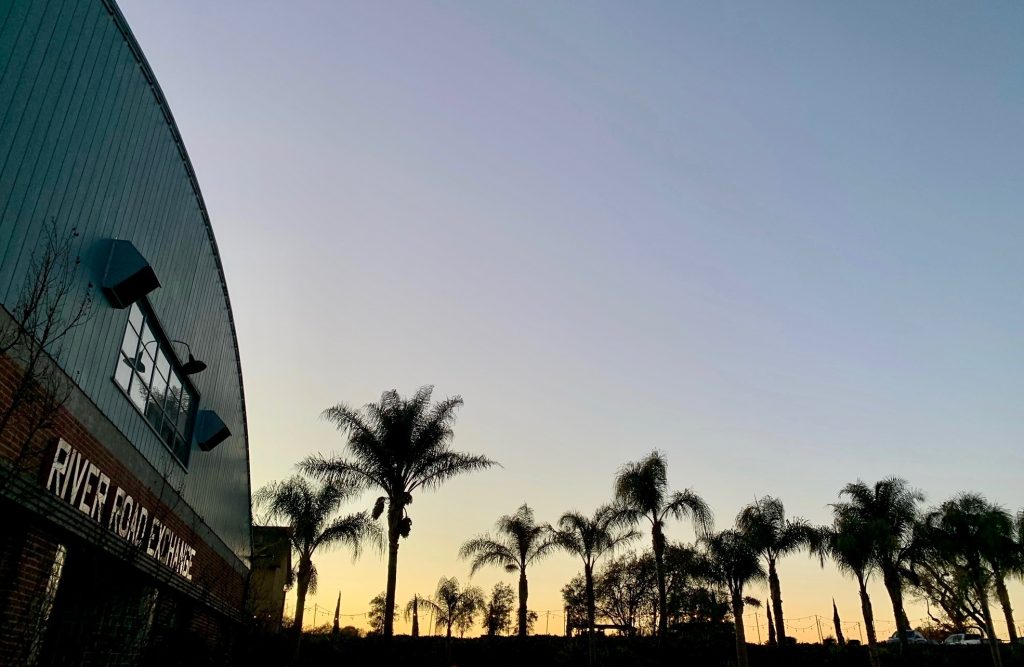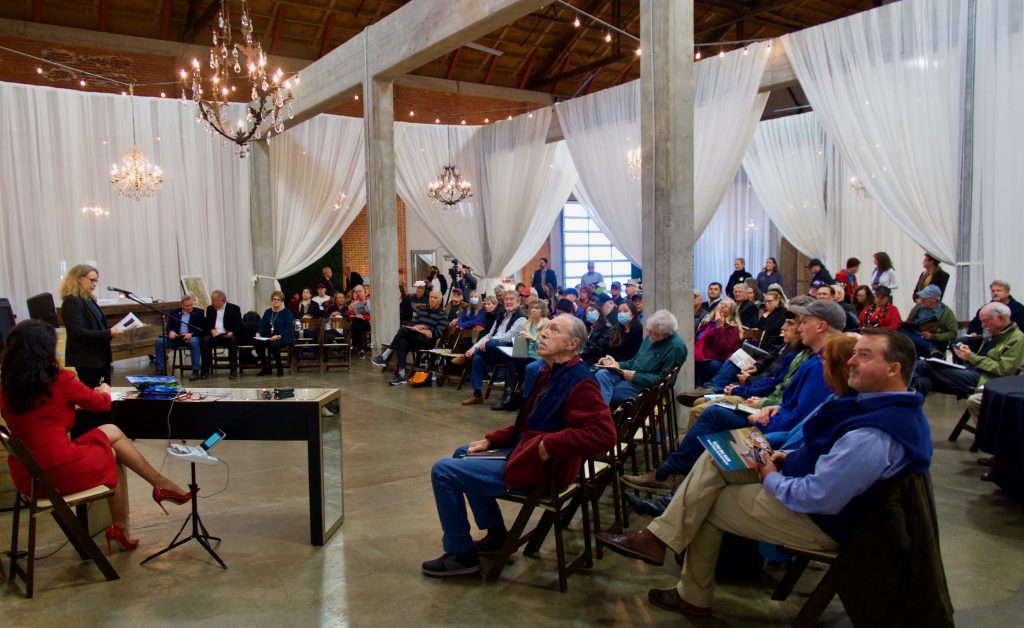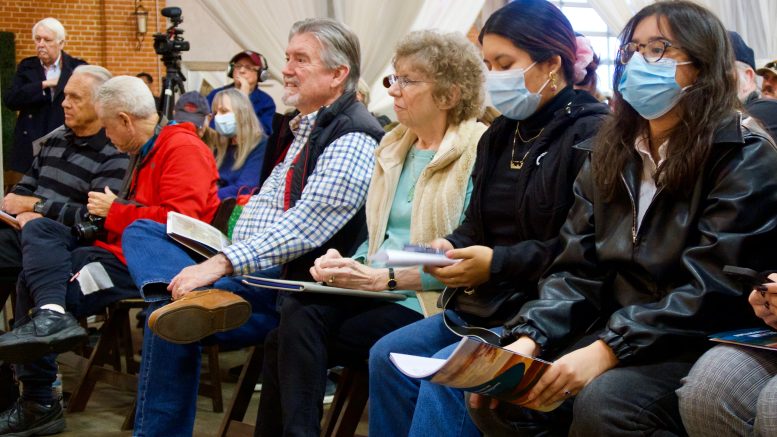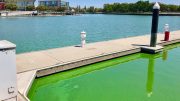Haunting memories of eminent domain come back to light as DWR sets its sights on Sacramento County properties
For Mark Massoni, it was hard to put words to what he was seeing and hearing as a crowd gathered in the Delta town of Hood on December 6.
Massoni grew up on Clifton Court, a section of the estuary that’s south of Discovery Bay. His father and uncle were known as the Massoni Brothers, an industrious pair who were farming 1,200 acres of wheat, safflower and barely along San Joaquin River’s tributaries. The family bought the property in 1952 and then spent 15 years turning it into an agricultural success story. Massoni’s father was feeling so confident about the crops that he was planning to build a new house.
In 1967, everything changed. The Massonis learned the meaning of the term ‘eminent domain.’
“My dad knew something was going on because the state came in and they were drilling test tools down to see what was underneath the top soil,” Mark Massoni remembered. “They had built a canal to go from Italian Slough to the inlet of the pumps they had, and they said that would be enough to supply those pumps. And it lasted for about a year – and then everything went wayside.”
The California Department of Water Resources, or DWR, was suddenly telling the Massoni family it would be seizing their farm to build what became known as the Clifton Court Forebay. The Massonis’ neighbor, well-known Delta personality Sheldon Moore, and several other farmers, faced the same battle for their land.
“And they brought in their big drilling rigs, and my dad tried to kick them out, and they said, ‘You can’t kick us out,’” Massoni explained. “Leading up to that, the ranch was paid off. All the machinery was paid-off …We lost everything.”
This week, when Massoni wandered into the elegant openness of Hood’s Willow Ballroom, he was reluctantly surrounding himself with contemporary Delta farmers now coping with DWR encroaching on their own land for experimental drilling – the very precursor his father had noticed 55 years earlier, just prior to disaster. While the state-sanctioned trespassing a half-century before was to construct a forebay, the recent activity is part of DWR’s 41-year effort to create a massive conveyance system that will move fresh water out of the North Delta and transport it to central and southern utility districts, largely to the benefit of billion-dollar agro-corporations.
The project has had many names over the decades: The Peripheral Canal. The Bay-Delta Conservation Plan. The Twin Tunnels. The California WaterFix. Since 2019, it’s largely referred to as the Delta Tunnel. The trespassing on behalf of this project was brazen enough that in June of 2019 the County of Sacramento hit DWR with a restraining order in court on behalf of property owners near Hood.
Ironically, one of the owners of the Willow Ballroom where these embattled Sacramento, Yolo and San Joaquin famers were mustering Dec. 6 is Donis Whaley, the daughter of another Delta family repeatedly targeted for government-driven eminent domain seizures over the years. Donis Whaley grew up in the town Port Chicago, a shipping hub on the banks of Suisun Bay just west of the Delta. Around the same time DWR was taking Massonis’ land in Clifton Court, the federal government was launching its own seizure of the entire town of Port Chicago. That land-grab was to expand the Concord Naval Weapons Station. Donis Whaley saw the town she was born and raised in get bulldozed to the ground. If that wound wasn’t deep enough, in 2016, the Whaley family lost 500 acres of prime farming land on Winter Island in the Delta to DWR, again under the threat of an eminent domain seizure.
So, Mark Massoni wasn’t just walking into a public gathering that churned his emotions – he was walking into a historic structure directly tied to a family who’d suffered the same state-sponsored chaos as his own.
And it was a gathering with a sense of urgency.
Hosted by the Delta Legislative Caucus and the Delta Counties Coalition, the meeting represented a late-stage opportunity for residents to give public comment on the proposed Environmental Impact Report for the current iteration of the tunnel. DWR could soon move forward with certifying that document. The EIR acknowledges at least 13 years of devastating construction impacts to the historic Delta legacy towns (other estimates of the timeline have been closer to 20 years), though the project’s opponents generally don’t think it adequately captures the tunnel’s impacts on water quality, air quality, local farming and the survival of numerous fish species.
It wasn’t easy for Massoni to listen to all the fear circulating through the room.
“It just brings out a lot of bad memories,” he admitted. “I asked my cousins to come to this meeting and – it’s just hard for them … If all that hadn’t happened, I’d still be farming there today.”
Gone with the water

For Jim Cox, a retired boat captain who’s professionally fished the Delta for 25 years, the drama that went down in Clifton Court back in 1967 is extremely relevant to the state’s current tunnel designs. Cox has been following water politics for decades and serves on an advisory committee for the Delta Protection Commission.
“What I’ve learned all these years of dealing DWR is that the Devil is on what they don’t tell you,” the captain said, stepping to a microphone in the ballroom. “And there’s a lot that’s not being mentioned here. One of the biggest things is [DWR] plans on operating Clifton Court at what they say is a 50% level … When they say what the capacity of this tunnel is, to know what [amount of water] they’re actually planning on exporting, you have to add in what they continue to export out of Clifton Court … They’re not telling you the total.”
Cox added, “The biggest point I want to make is that Clifton Court, as long as it’s been in existence, has been the biggest fish-killing spot in the Delta: More fish die there than from pollution, or fishing, or anything else … It draws the predators in when the pumps are running, which these days is practically always, and the fish are trained into Clifton Court and they cannot get out … This shows you the affect that that pump has.”
Like everyone who spoke that night, Cox’s comments were heard by elected supervisors from five counties, members of the State Assembly and one state senator. But, in that moment, his comments weren’t heard by anyone from DWR. Despite being invited to the meeting, which was being held in the town most directly threatened by the tunnel project, DWR did not send any personnel to the event. SN&R contacted the department about why it wasn’t present on behalf the Newsom Administration to share project information, answer questions or listen to public comments.
“The Department of Water Resources responded to the Caucus’s invitation in an email to Senator Dodd’s Legislative Director and explained that, as we are still in the formal public review period, it would be inappropriate for the Department to respond to public comments made outside of the CEQA process,” DWR spokesman Laurence Campling responded in an email. “However, we look forward to receiving the public comments that result from the meeting … We have prepared a variety of materials meant to help members of the public review the Draft EIR, including fact sheets, an explainer booklet, and instructional/explainer videos.”
Campling added, “DWR is committed to understanding, and mitigating local impacts of this critical project of statewide importance. We appreciate the Legislative Delta Caucus’s efforts to get more public input on the Delta Conveyance project.”
Despite DWR’s absence, members of the Legislative Caucus had a certified court reporter present for creating a legally binding transcript to ultimately be included as public comments on the EIR.
Prior to Cox and many other residents speaking up, the gathering got a project overview from environmental attorney Osha R. Meserve, who’s been deeply involved in tunnel litigation on behalf of Delta farmers and business owners. Meserve told the crowd that, despite Newsom’s claims that a one-tunnel system is a totally different project than the previous two-tunnel proposal, when it comes to threats against the Delta’s ecology, cultural resources and general livability, not much has changed in the new EIR. This is particularly true, Meserve pointed out, of the project’s massive water intakes that would essentially convert the North Delta’s rural beauty into a stark industrial zone.
“It still wreaks havoc on the area,” she observed. “Each intake is still the same size as what we saw before, with the 3,000 cubic-feet-per-second, which is the same as about 3,000 basketballs moving per-second on the river … It’s a really large proportion of the river when this thing would operate … The intake near Hood, you can see it kind of towers over the town. And a lot of you who maybe came on I-5, Twin Cities Road is where there would be a really big tunnel entry where the tunnels would launch; and then that’s also where they would be storing all this muck, and they don’t really have a plan for what to do with this. There would probably be a permanent muck pile there, where there is currently farm land that’s used for different agricultural uses.”
Meserve ended her presentation by saying, “All our salmon runs have to go past this location, so even if the screens are better than the ones in the South Delta, their impact is about 13% of the Winter Run Chinook Salmon mortality from these screens, so it’s a lot … And we would lose 3,800 acres of farmland as well.”
‘Fight to the end’

During the meeting, some young adults from Stockton spoke about the toxic algal blooms that formed on McLeod Lake along their city’s downtown waterfront in the summer of 2020, which wafted unhealthy, potentially hazardous fumes into the air throughout the well-tread business district (the blooms have also been linked to the deaths of area sea otters). California environmental groups have cited research indicating that these toxic algal blooms are connected to lack of cool, fresh water flowing through the North Delta. That’s why conservationists – the ranks of which include groups like the Sierra Club and Restore the Delta – have argued that the Delta Tunnel will accelerate the region’s toxic algal bloom problem, with the worst impacts hitting marginalized communities in San Joaquin County that already have consistently poor air quality.
“The proposed tunnel will exasperate current and very real issues in the Delta and Delta communities,” said Stockton resident Cintia Cortez, “issues that are felt in the environmental justice community and in my community – in communities of minority and low-income families that are discouraged from drinking the water going into their homes and who cannot step outside of their homes to take a breath of fresh air.”
Bob Wright, an environmental attorney from Sacramento, told the crowd that after practicing for nearly 50 years, DWR’s current draft EIR for the tunnel is the worst he’s ever seen.
“I was astonished when I started reviewing this document,” Wright shared. “It doesn’t evaluate the impacts on surface water under CEQA … Now, why would they do that? Because if they did what they’re supposed to do under the law, and evaluate the impacts of the project under CEQA, they would have to reach the obvious, no-brainer conclusion that, yes, the project does have adverse environmental impacts on Delta waters.”
Pamela Bulahan, Vice-Mayor of Isleton, pointed out that in 1982, when California voters got their one and only chance to vote on the project – back when its first iteration was the peripheral canal – they overwhelmingly rejected the idea of a gargantuan system moving fresh water out of the North Delta. In the four decades since, Bulahan observed, state officials and their allied special interest groups have made sure that Californians have no up-or-down vote on the idea, which is now the Delta Tunnel.
“I’ve heard about this boondoggle for decades, since I was a kid,” Bulahan stressed. “It’s a corporate welfare project … We should fight this thing to the end … I don’t see why this is even being brought up, because when it was put to a vote literally four odd decades ago, that should have been put to bed.”
Watching quietly from the back, Mark Massoni wondered to himself if maybe there was hope for history not repeating itself.
“We were once told to never fight the state of California, because you’re going to lose,” he recalled of his own family’s struggle in 67’. “But to see all these people come out tonight, I’m impressed. And I’m hoping they can put a stop to this thing, because it’s going to impact everybody – the wildlife, the water, all of it. And DWR – their track record? They’re going to ruin things.”
Any Californian can make public comments to DWR about the proposed Delta Tunnel between now and December 16 here.






Be the first to comment on "As state preps, residents make their case that the Delta Tunnel is an environmental crime story in full-view"